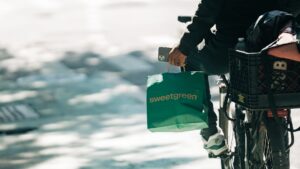### How Popular Weight Loss and Diabetes Drugs are Impacting Consumer Behavior
An interesting trend is emerging among consumers who are taking weight loss and diabetes drugs known as GLP-1s. These medications are not only curbing appetites but also affecting how much individuals spend on food. A recent Morgan Stanley survey revealed that most people on GLP-1s are reducing their spending on eating out at restaurants and ordering takeout. This shift in behavior is raising concerns about the potential impact on the bottom lines of major restaurant chains and packaged food companies.
Some of the popular GLP-1 drugs in the market include Novo Nordisk’s Wegovy and Ozempic, as well as Eli Lilly’s Zepbound and Mounjaro. The demand for these medications is expected to continue rising, with Morgan Stanley analysts forecasting the GLP-1 market to reach $105 billion by 2030. By 2035, an estimated 31.5 million Americans, roughly 9% of the population, are projected to be using GLP-1s.
The survey conducted by Morgan Stanley indicated that consumers on these drugs are making significant changes in their eating habits and spending. A large percentage reported spending less on dining out and takeout, with a smaller share cutting back on grocery expenses. Additionally, these individuals are opting for smaller portions and healthier meal choices when dining out.
While the impact of GLP-1s on the food and beverage industry is significant, it is not considered an existential threat. Restaurants that offer convenience and unique experiences are expected to weather the changes brought about by these medications. However, health-conscious fast-casual restaurants like Cava, Chipotle, Sweetgreen, and Starbucks are better positioned to adapt to the evolving consumer behavior.
On the other hand, some food companies may face greater challenges, especially those with portfolios focused on indulgent snacks and beverages. Brands like Hershey are deemed more at risk, while companies offering healthier alternatives stand to benefit. The survey also highlighted a potential decline in consumption of certain food categories, such as sugary drinks, snacks, and alcohol, by 2035.
It’s clear that GLP-1s are reshaping consumer behavior and spending patterns in the food industry. As the prevalence of these medications continues to rise, businesses across the sector will need to innovate and cater to the changing preferences of health-conscious consumers. Stay tuned for more insights and updates on how GLP-1s are influencing the business landscape.
Source: [Extreme Investor Network](add your website URL here)


